
views
Air-Drying Your Roses

Choose roses with the best blooms for drying. You want a rose which has a nice bloom, but also no moisture or flaws. The moisture will cause molding and the flaws will be exaggerated in the drying process. You can use blooms which have opened a bit, but don't use a rose which is already beginning to fall apart and lose its petals.
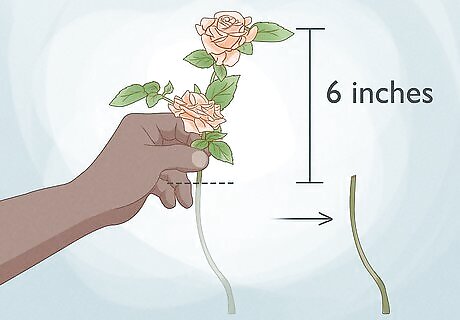
Trim the rose stems. You want to trim the stems, but not too short. Leave 6 inches or more of the stem for drying. Remove the foliage from the stems. The leaves will not dry nicely and should be removed. Leaves also hold water and will slow the overall drying process.

Tie rose stems together with a rubber band. Bundle all of the roses you will be drying and wrap a rubber band around the stems. Leave at least 2 inches of stems beyond the rubber band. Continue wrapping the rubber band around the stem until the roses are secure. You can arrange the roses into a nice bouquet before drying so they are already prepared to be displayed.

String a clothesline in a cool, dark place. Find a room which you don't use often, like a laundry room, attic or a utility closet. The space should still have good ventilation to allow the moisture to escape. Stretch a clothes line or rope between 2 points in this room and tie it securely. Make sure it is sturdy enough to hold your roses. You want to choose a dark space. The color of your roses will darken in the drying process, but exposing them to light will increase this color change, while using a dark space will reduce the alteration in the rose color.

Attach your roses to a hanger. Pull some of the rubber band used to wrap the roses together over the hook of a hanger. If you have a hanger with an extra hook under the hanging hook, you can strap the roses there. Otherwise, pull some of the rubber band over the hanging hook of the hanger.

Hang the roses on the line for 2-3 weeks. Hook the hanger onto the line in the dark room and leave them to until they are dry. It can take several weeks before your roses are completely dry.
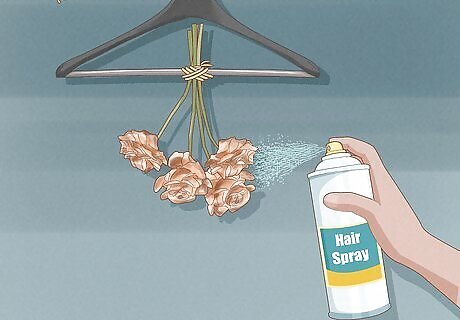
Preserve the roses with hairspray. Once the roses are dry, they will be brittle. Remove them from the hanger and spray them with hairspray to reinforce and protect them from damage. Use an unscented hairspray when spraying your roses. Spray the roses lightly to avoid saturating the roses you have just dried.
Using Desiccant to Dry Roses

Choose your desiccant. Desiccant is a sandy-textured product which absorbs moisture from the rose encouraging it to dry quickly and evenly. There are several products you can choose from, including borax, cornmeal, alum, and the popular choice, silica gel. This method is also effective using sand.
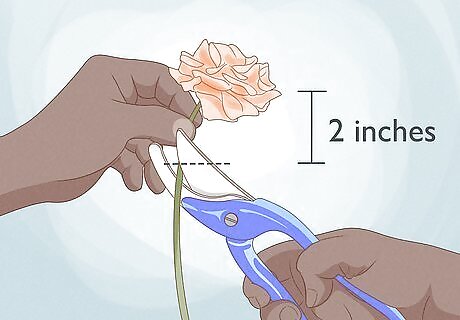
Trim your rose stem to about 2 inches. You want to be able to place your rose with the bloom facing up inside your air-tight container. Trim the stem to 2 inches, then test it in the container and make sure that it fits with room to cover the bloom with the lid. If the rose is too tall, trim more of the stem to fit the container.

Place the rose in the desiccant. Pour 2 inches of desiccant into the container. Push the rose stem into the desiccant so that the rose stands in place with the bloom facing up. If you are drying more than one rose in a container, make sure there is at least one inch of space between the roses.
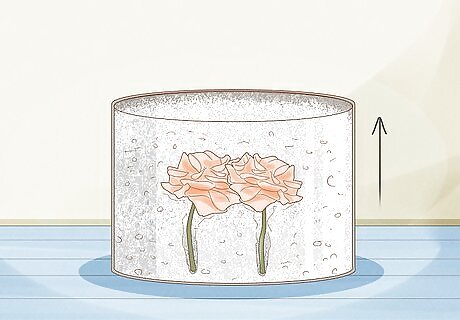
Cover the rest of the rose with desiccant. Using a small cup, pour more desiccant over the bloom to cover the rose. Be sure that the desiccant fills between the petals. If the rose falls to the side, use a spoon to right it until it is balanced again.
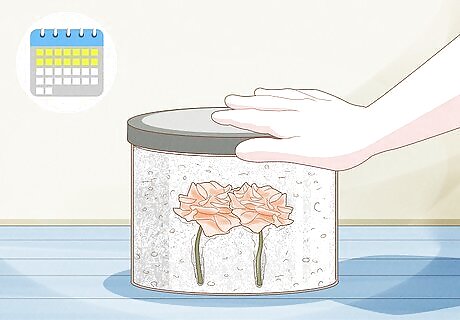
Leave the rose in the airtight container for 1-2 weeks. Cover the container with an airtight lid. You may also want to run some masking tape over the edges for extra security. Let the standard roses sit for 2 weeks. Mini roses should dry after 1 week. Write the date you sealed the container on the side of the container with a pen.
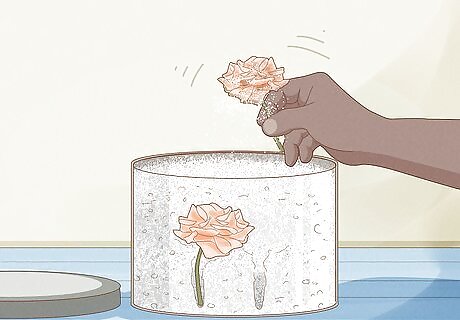
Remove the rose from the container and shake off the desiccant. Gently pour the container out into an oven pan. Pick up the rose by the stem and shake off the excess desiccant until the rose is clean. Gently brush the petals off if the dust persists. If some residue is still stuck to the rose, pour a stream of desiccant over the trouble areas to drive the residue from the rose. Pouring the silica desiccant into an oven pan preps you for baking the silica for reuse.
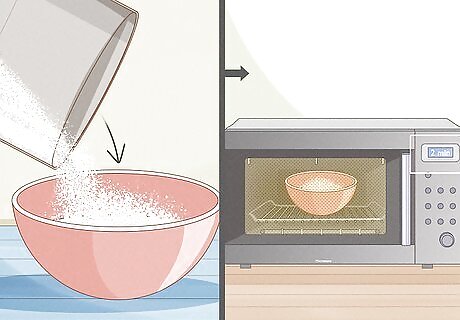
Bake silica desiccant for reuse. Silica desiccant shows signs of moisture by fading or changing in color. If it has faded, blue is turning into pink, or orange is turning green, you will want to dry it out by baking the desiccant. Pour the desiccant into a microwave safe bowl. Set your microwave to medium heat or defrost. Cook the desiccant for 2-3 minutes or until the color has returned to signify it is ready to use. Remove the bowl from the microwave using an oven mitt. Both the bowl and desiccant will be very hot. Allow it to cool on a heat-safe surface for 24 hours. If the desiccant is showing signs of moisture from a humid environment, you can bake it before the first use.


















Comments
0 comment